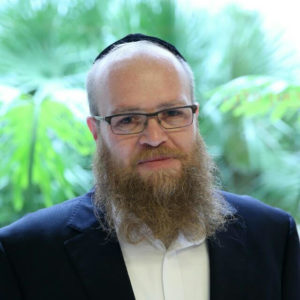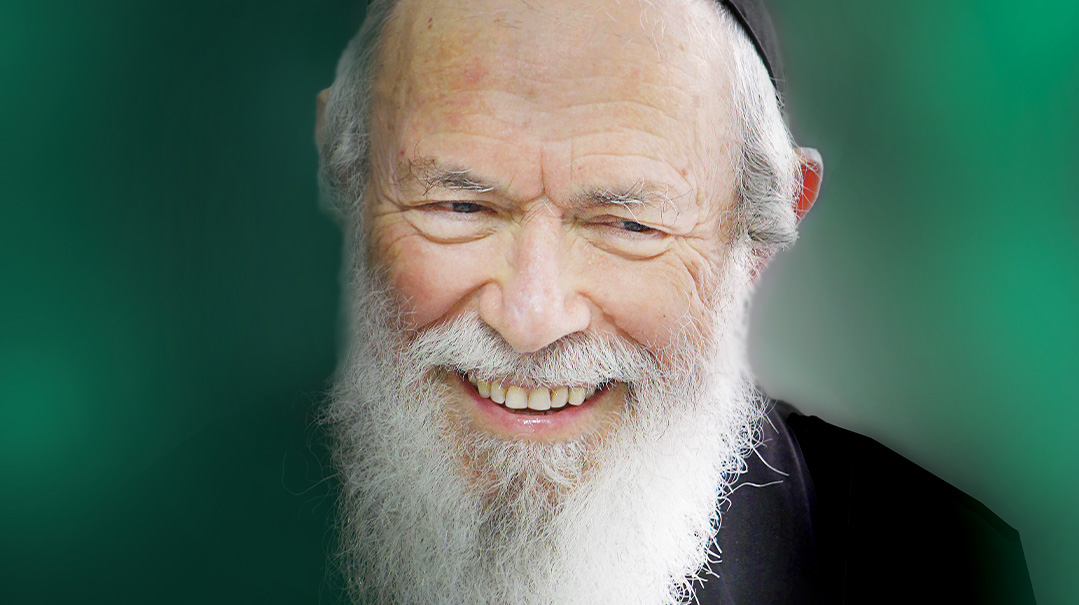Sweetness and Light


Rav Yitzchok Zilberstein is driven by a mission to show that there’s no sweetness like Torah when it’s practical and clear

Photos: Mattis Goldberg, Anachnu V'tzetzaeinu, Ariel Ochana
The dog walkers and joggers taking the air in Tel Aviv’s Hatikvah park on that mid-Elul Motzaei Shabbos in 2019 had likely never seen a stranger sight.
Instead of the soccer game that would normally have taken up the grassy expanse, the scene was something from a different world.
In the middle of this secular neighborhood — home to African migrants, Chinese workers, and poor Israelis — a chareidi election rally was in progress, graced by none other than Rav Chaim Kanievsky.
It was a bizarre sight. Hundreds of traditional locals watched in bemusement as shtreimel-clad chassidim belted out Sephardic classics like “Adon Haselichot.” They listened patiently to classic chareidi stump speeches and sundry exhortations to vote for a party who pretty much no one in their neighborhood identified with.
But with all the goodwill in the world from the audience, the strange admixture of Bnei Brak and Tel Aviv just wasn’t working. The evening threatened to be a failure, until the last speaker took the microphone.
“Isser Harel, the famous Mossad chief, used to speak about something he witnessed as a child,” Bnei Brak posek Rav Yitzchok Zilberstein began his speech.
This was a cultural reference that seemed familiar, and so the audience sat up in their plastic seats and paid attention, as Rav Zilberstein beamed around the park and started to weave his magic.
“Harel came from the Latvian port city of Dvinsk. There’s a river that flows through the city that sometimes freezes,” the rabbi continued, “and one year, a dreadful thing happened: The ice upstream melted, but that within the city didn’t. The result was a blockage that prevented the water from flowing, and threatened to drown the city.
“The authorities tried everything to remove the obstruction, including dynamite, but nothing worked. As thousands of townspeople watched the waters rise, the gentile mayor suddenly had an idea.
“ ‘Call the rabbi!’ he said. ‘He’s a holy man, and maybe, just maybe, his prayers can work a miracle.’
“Rav Meir Simcha HaKohein, the Ohr Sameiach, came out wrapped in his tallis and tefillin, and a hush fell over the massive gathering.
“The townspeople — most of them non-Jews — watched in silence as the rabbi began to pray. A few seconds went by, and the tension mounted as thousands of eyes flitted between the holy man and the frozen river, waiting to see whether the town would be saved.
“Then the incredible happened: There was a gigantic cracking, tearing sound, and with agonizing slowness, the ice sheet that had resisted even explosives began to break up. With a trickle and then a rush, the river began to flow normally, and the city was saved.
“And that,” said the speaker, bringing his Tel Aviv audience back from prewar Latvia to the topic at hand, “is the power of a Torah great. When you have my brother-in-law Rav Chaim Kanievsky sitting here, and the opportunity to vote for a party that stands for the Torah and Shabbat, it’s something that is above nature.”
The performance that night in the Tel Aviv park was a vivid display of the unique mix of qualities that make Rav Yitzchok Zilberstein a once-in-a-generation figure.
He’s a world-famous posek who spends 18 hours a day dealing with thorny halachic problems, and a confidant of some of the greatest gedolim of recent times, yet he retains that common touch and the uncanny ability to find the right words to connect with Jews of any persuasion.
In a world of labels, Rav Yitzchok Zilberstein genuinely defies classification. He’s equally at home in the litvish and chassidish worlds; greeted with open arms in a kollel in Bnei Brak or a shiur in a Shomron settlement. He’s someone who retains his own uncompromising worldview, yet seems to belong to all parts of the Jewish People.
Like the maggidim of old, stories and Rav Zilberstein are indivisible. They burst forth in a tidal wave of anecdote, mashal, and personal recollection from a childhood among the greats of Yerushalayim — or of a Mossad chief, if that’s what the audience needs to hear.
Yet amid all the storytelling, one saga — Rav Yitzchok Zilberstein’s own epic life story — remains largely untold.
It’s the story of a young boy, who despite his humble background, decided to dedicate himself to learning Torah. From prewar Poland to Yerushalayim’s Old Yishuv, the Chazon Ish and the Belzer Rebbe, Slabodka’s Rav Mordechai Shulman to Rav Shmuel Wosner, he was shaped by a wide range of influences.
And somewhere along his journey, he realized that his life’s work wasn’t to be a rosh yeshivah or chief rabbi, but to deliver a new approach to teaching.
“Torah has to be absorbed not just intellectually, but in a deep, emotional way,” he says, “and to do that, it needs to be clear and sweet, taught through real-life scenarios and stories. My task in life is to help Jews to love Torah.”
Oops! We could not locate your form.







